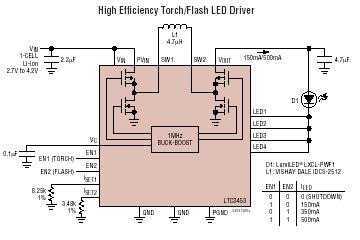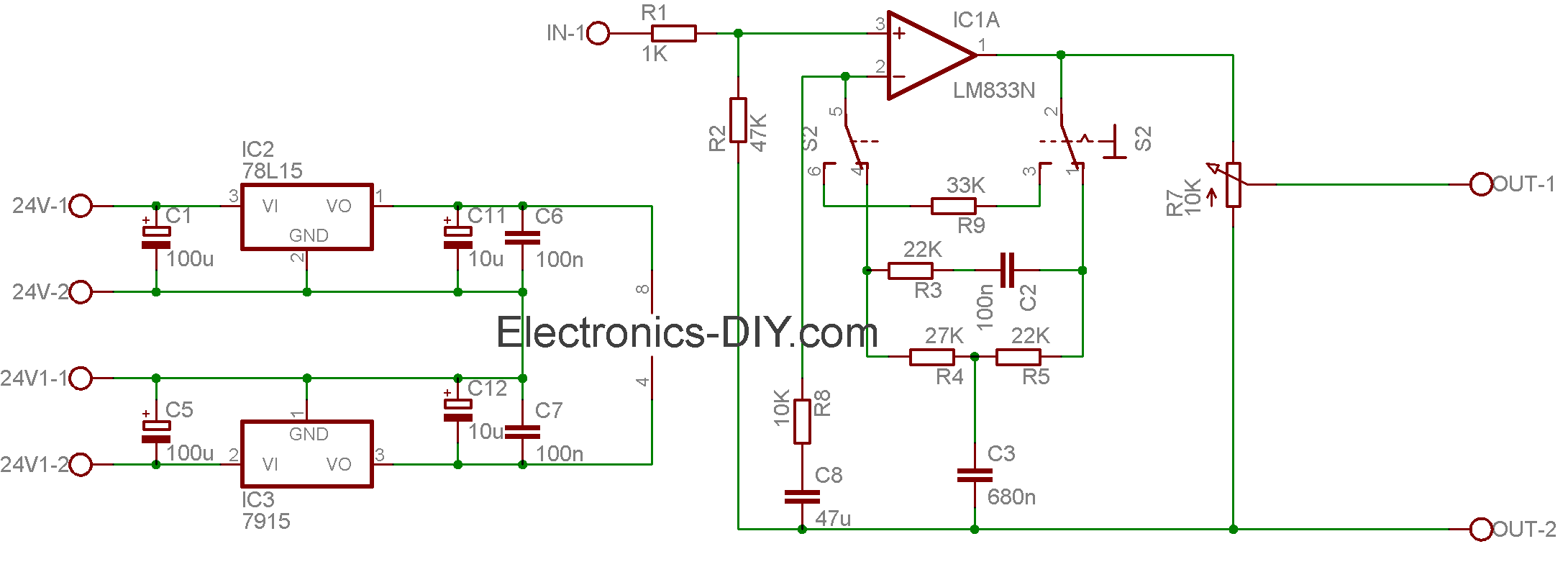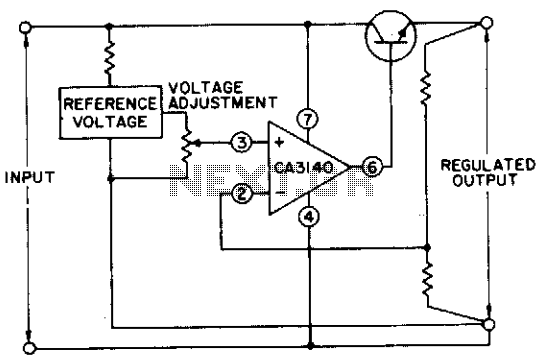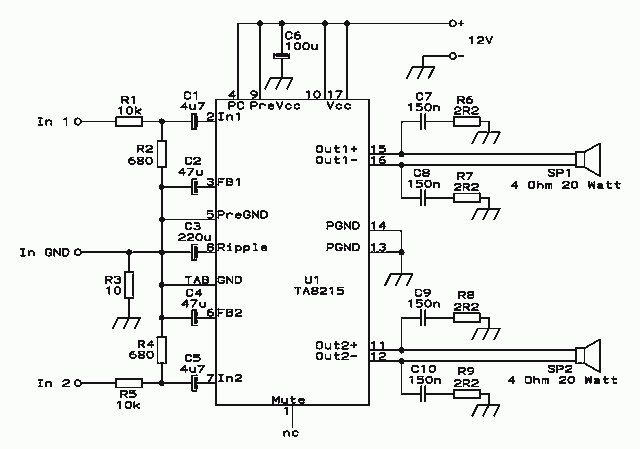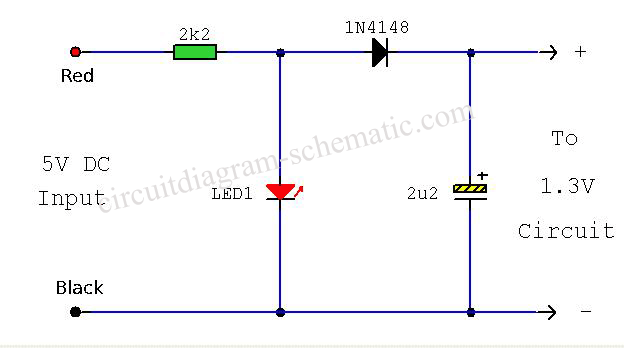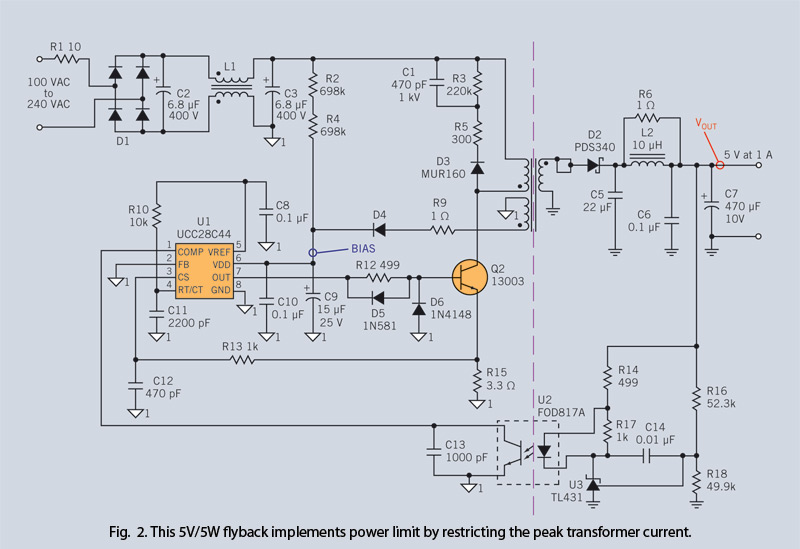
Power supply +20V/15A and +12V/3A
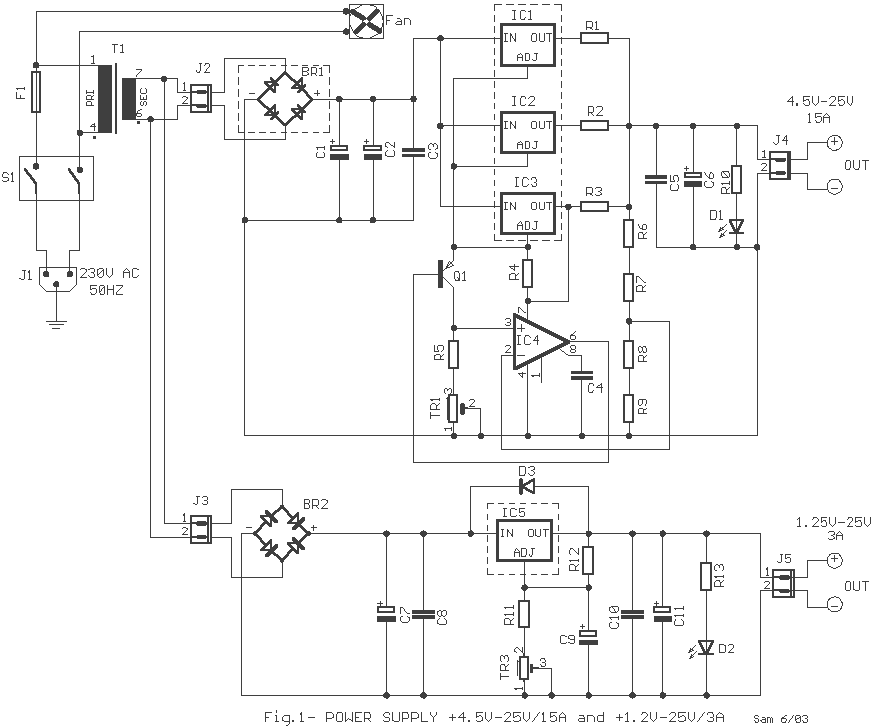
The circuit is based on application of National Semiconductor. First is constituted by three voltage regulators LM338 [IC1-2-3] connected in parallel. The each one regulator has the possibility of giving 5 A in his output. Also exists the possibility to regulate the output voltage from +4.5V until 25V DC, stabilized. The voltage regulation in the output becomes with the TR1. If it does not exist the need of this continuous output voltage regulation, then we can measure the resistance value of trimmer TR1 in the particular output voltage and him replace with proportional value constant resistance.
The circuit employs three LM338 voltage regulators (IC1, IC2, IC3) configured in parallel to provide a robust and adjustable power supply capable of delivering up to 15 A total output current, assuming proper thermal management and heat sinking are implemented. Each LM338 is capable of supplying a maximum output current of 5 A, and the parallel configuration allows for increased current capacity while maintaining voltage regulation.
The output voltage can be adjusted from +4.5 V to +25 V DC, making it suitable for a variety of applications requiring different voltage levels. The output voltage regulation is achieved through the use of a trimmer potentiometer (TR1), which allows for fine-tuning of the output voltage. When precise voltage adjustment is not necessary, the trimmer can be replaced with a fixed resistor that matches the resistance value measured at the desired output voltage, thus simplifying the circuit and potentially improving reliability.
To ensure stable operation, each LM338 should be equipped with appropriate input and output capacitors as specified in the manufacturer's datasheet. Typically, a 0.1 µF ceramic capacitor is recommended at the input to filter high-frequency noise, while a larger electrolytic capacitor (e.g., 10 µF to 100 µF) is recommended at the output to improve transient response and stability.
Additionally, thermal considerations must be addressed by using adequate heat sinks for each LM338 to prevent thermal shutdown during high load conditions. The thermal performance can be further enhanced by implementing a thermal management strategy, such as forced air cooling or mounting the regulators on a heat-dissipating chassis.
Overall, this circuit design provides a versatile and efficient solution for applications requiring adjustable DC voltage supplies, with the capability to handle significant current loads while ensuring stable output performance.The circuit is based on application of National Semiconductor. First is constituted by three voltage regulators LM338 [IC1-2-3] connected ``in parallel` `. The each one regulator has the possibility of giving 5 A in his output. Also exists the possibility to regulate the output voltage from +4.5V until 25V DC, stabilized. The voltage regulation in the output becomes with the TR1. If it does not exist the need of this continuous output voltage regulation, then we can measure the resistance value of trimmer TR1 in the particular output voltage and him replace with proportional value constant resistance. 🔗 External reference
The circuit employs three LM338 voltage regulators (IC1, IC2, IC3) configured in parallel to provide a robust and adjustable power supply capable of delivering up to 15 A total output current, assuming proper thermal management and heat sinking are implemented. Each LM338 is capable of supplying a maximum output current of 5 A, and the parallel configuration allows for increased current capacity while maintaining voltage regulation.
The output voltage can be adjusted from +4.5 V to +25 V DC, making it suitable for a variety of applications requiring different voltage levels. The output voltage regulation is achieved through the use of a trimmer potentiometer (TR1), which allows for fine-tuning of the output voltage. When precise voltage adjustment is not necessary, the trimmer can be replaced with a fixed resistor that matches the resistance value measured at the desired output voltage, thus simplifying the circuit and potentially improving reliability.
To ensure stable operation, each LM338 should be equipped with appropriate input and output capacitors as specified in the manufacturer's datasheet. Typically, a 0.1 µF ceramic capacitor is recommended at the input to filter high-frequency noise, while a larger electrolytic capacitor (e.g., 10 µF to 100 µF) is recommended at the output to improve transient response and stability.
Additionally, thermal considerations must be addressed by using adequate heat sinks for each LM338 to prevent thermal shutdown during high load conditions. The thermal performance can be further enhanced by implementing a thermal management strategy, such as forced air cooling or mounting the regulators on a heat-dissipating chassis.
Overall, this circuit design provides a versatile and efficient solution for applications requiring adjustable DC voltage supplies, with the capability to handle significant current loads while ensuring stable output performance.The circuit is based on application of National Semiconductor. First is constituted by three voltage regulators LM338 [IC1-2-3] connected ``in parallel` `. The each one regulator has the possibility of giving 5 A in his output. Also exists the possibility to regulate the output voltage from +4.5V until 25V DC, stabilized. The voltage regulation in the output becomes with the TR1. If it does not exist the need of this continuous output voltage regulation, then we can measure the resistance value of trimmer TR1 in the particular output voltage and him replace with proportional value constant resistance. 🔗 External reference
